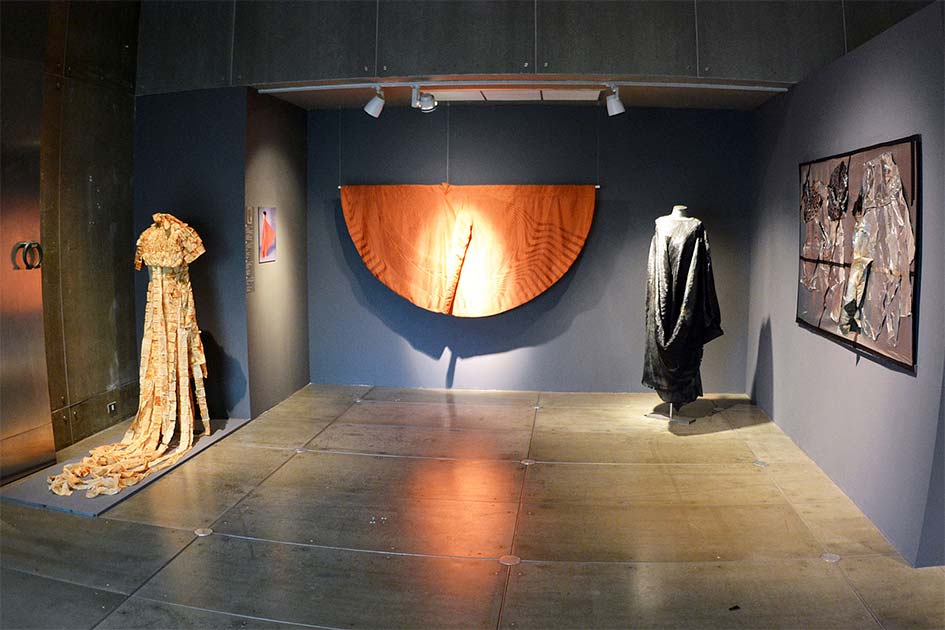Today Thai silk is renowned for its quality, beautiful colors, and the brilliant artisanal craftsmanship that goes into its products. This was not always the case, however and its popularity largely stems from the success of one company, a company owned by an American.
That man was Jim Thompson: architect, spy, antique collector, and ultimately a successful silk magnate. In the 1950s Thompson’s Thai-based company shot to success, changing its place in the country’s cultural and economic landscape.
However, not long after achieving this success Thompson himself disappeared under mysterious circumstances. To this day no one really knows what happened to him.
Was his disappearance the result of a tragic accident, or something more sinister? Could the eccentric Thompson have faked his own death?
A Man of Many Colours
Before his disappearance, Jim Thompson did a lot of interesting things. How does one man go from being an architect, to a spy to a silk magnate? Looking at who his family was, it’s perhaps no wonder he lived such an eventful life.
He was born in Greenville, Delaware in 1906 to Henry and Mary Wilson Thompson. His father was a rich textile manufacturer while his mother was the daughter of a famous Union general, James Harrison Wilson. He would go on to follow in the footsteps of both sides of the family.
Thompson attended St. Paul’s School in Concord, New Hampshire, and graduated in 1928 from Princeton. That same year he represented the US at the Olympics in the 6-meter (20 foot) sailing event.

From there Thompson went on to the University of Pennsylvania’s School of Architecture but he dropped out after discovering he was no good at calculus. One can hardly blame him for that.
This setback didn’t stop him from working as an architect for Holden, McLaughlin & Associates in New York, however. He worked there for 9 years from 1931 to 1940. Despite his success in the field, he changed direction again in 1941 and quit his job to enlist with the Delaware National Guard.
While serving at Fort Monroe, Virginia Thompson met Second Lieutenant Edwin Fahey Black. His new friend convinced him to join the Office of Strategic Services (OSS), which would later evolve into the CIA.
- Judge Crater: The “Missingest Man” in New York City
- Murder of Banker Roberto Calvi: Vatican, Mafia, or Secret Society?
Thompson served with the OSS throughout WW2. He first worked with the French Resistance in North Africa before being sent to Europe. Following Victory Day in Europe he was quickly transferred to Ceylon (Sri Lanka today) where he used his experience working with rebels to work with the Allied-friendly Free Thai Movement (Seri Thai).
It was this commission that would change his life forever. While working with the Seri Thai he was tasked with liberating Thailand from the occupying Japanese army with the support of Pridi Panomyong, the regent to King Ananda Mahidol of Thailand, and Seni Pramoj, the Thai ambassador to the United States. He quickly fell in love with all things Thai.
Before he could really get to work, however, Japan surrendered, officially ending the war. He was nevertheless still sent to Thailand, where he was tasked with founding the Bangkok OSS office.
He then began work as a military attaché at the United States legation. While working in this role he also began a 9-year affair with the his boss the US Minister to Thailand’s wife.
During his service, Thompson fell in love with Thailand and became incredibly well-connected there. In 1946 he returned to the US intending to leave the army so that he could enjoy civilian life in Thailand. He planned on joining a group of investors to buy The Oriental Hotel in Bangkok.
Reviving the Thai Silk Industry
This initial plan hit a roadblock, however, when Thompson found he was incapable of getting along with some of his fellow investors. Rather than waste any more time he decided to give up his shares in the company and focus on something he felt he was born to do.
Two years after leaving the army and moving to Thailand Thompson partnered with George Barrie and founded the Thai Silk Company Limited. Each man owned 18% of the company with the other 64% being sold to local and foreign investors.
In the 1950s and 1960s, Thompson became a key figure in the revival of the Thai silk industry. Recognizing the economic potential and cultural significance of Thai silk, he worked tirelessly to elevate its status on the global stage. Thompson introduced innovative techniques and modernized production methods, ensuring that Thai silk became synonymous with quality and craftsmanship.

It all started in 1951 when Irene Sharaff, a famous American costume designer and winner of five Academy Awards, used Thai silk while working on the massively successful musical The King and I.
This led to the company becoming an international sensation, attracting attention from fashion designers, celebrities, and tastemakers around the world. The business was known for preserving traditional weaving methods while incorporating contemporary designs and colors, infusing Thai silk with a contemporary flair. It was particularly well known for inventing the bright jewel tones and dramatic color combinations that are so commonly associated with Thai silk to this day.
Thompson loved Thailand and wanted his company’s success to benefit the people who lived there by elevating thousands of Thailand’s poorest out of poverty and into the working world. He did this by keeping his massively successful business cottage-based. His mostly female workforce could keep their position at home while also becoming breadwinners in their own right.
The Mysterious Disappearance
Despite his success, Thompson’s story took a dark turn in 1967. While on vacation in Malaysia’s Cameron Highlands, he mysteriously vanished without a trace. The circumstances surrounding his disappearance have fueled numerous theories and speculations.
Following his disappearance there was an intense 11-day search. Over 500 people including everyone from the local police to Gurkhas and mystics joined the search, but no trace of Jim Thompson was ever found. Thompson’s status as a wealthy businessman and his colorful history led to much speculation in the press.
There were four schools of thought on what happened to him. Perhaps the most popular theory was that he’d been kidnapped. Malaysia was a poor country and Thompson would have been a tempting target for kidnappers. The problem with this theory is that no ransom note ever showed up.
Or maybe Thompson had been murdered. He had served as a spy during the war, maybe an old enemy had caught up with him. Or maybe his sometimes-colorful private life had caught up with him. The fact his sister was brutally murdered a few months after his death made some believe there was a deeper conspiracy at play.

Others believed Thompson willingly disappeared having grown bored of his success in the Silk Industry. Perhaps he’d volunteered for top-secret work helping to resolve the increasingly disastrous Vietnam War. Following the war’s end, he could have started a new life entirely. There are lots of places to hide in Asia, after all.
The final theory is also one of the more plausible. Not everyone loved the fact that Jim Thompson’s company was so successful. Perhaps one of his business rivals had used his trip as a chance to do away with him?
All the theories sound plausible enough. A potential breakthrough in the case was made in 1985 with the discovery of bone fragments near where Thompson was suspected of having disappeared. It’s hoped that someday a DNA test could connect them to the missing man.
The passage of time has not dulled interest in Jim Thompson’s fate. There have been numerous other investigations over the years, the most in-depth being a 500-page report released in 2015.
This report found that the most straightforward answer is the most probable. Thompson got lost, had an accident, and died. It noted that the search effort was sufficient to cover such a massive area and that by now his remains are likely scattered over several miles.
Those close to Thompson never gave up hope. The general consensus between them was that Thompson chose to disappear and start a new life. With his skills, if he wanted to stay invisible, he could.
Almost every year someone new revisits this mystery claiming to have solved it once and for all. Maybe one day they actually will.
Top Image: Jim Thompson’s house, where the ex-spy and businessman lived until his sudden disappearance in 1967. Source: Matthew Colvin de Valle / CC BY 2.0.